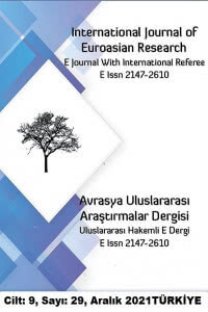Hazar Kağanlığının Kutsal-İkili Yönetiminin Judaik Şifreleri
Hazar, Hazar Kağanlığı, İkili Yönetim, Kutsal Hükümranlık, Yahudilik.
The Judaıc Codes of The Khazar Qaganate’s Sacred-Dıarchy
Khazar, Khazar Qaganate, Dual Kingship, Sacral Kingship, Judaism. Hazar, Hazar Kağanlığı, İkili Yönetim, Kutsal Hükümranlık, Yahudilik.,
___
- Ağırakça. Ahmet. 2000. “İhşîd”. ss. 550-551 içinde Diyanet İslam Ansiklopedisi (DİA). C. 21. Ankara: TDV Yayınları. Dunlop, D. M. 1954. The Jewish Khazars, New jersey: Princeton University Press.
- Easton, M. G. 1897. “barefoot”, Eastons Bible Dictionary, 3th. ed. (1897): 138. Accessed February 22, 2022. Easton's Bible Dictionary (archive.org); https://ccel.org/e/easton/ebd/ebd3.html.
- _________________ “Fire”, Eastons Bible Dictionary, 3th. ed. (1897): 435-436. Accessed February 22, 2022. Easton's Bible Dictionary (archive.org); https://ccel.org/e/easton/ebd/ebd3.html .
- Frazer, J. G. 1917. “The Killing of The Khazar Kings”. Folklore. 28 (4): 382-407.
- Golden, Peter B. 2007a. “The conversion of khazars to Judaism” içinde The World of the Khazars, ed. P. Golden, H. Ben-Shammai, András Roná-Tas, HdO studies. 8 (17): 123-162.
- ______________ 2007b. “Irano-Turcica: The Khazar Sacral Kingship Revisited” Acta Orientalia Academiae Scientiarum Hung., 60 (2): 161-194.
- _______________ 1980. Khazar Studies. C. 1. Budapest: Akadémiai Kiadó.
- Ha-Yashar, Sefer (Midrash). 1876. (Çev. Edward B.M. Browne). New York: accessed July 20, 2022.https://www.sefaria.org/Sefer_HaYashar_(midrash)%2C_Book_of_Exodus.31?lang=bi
- Hirsch, Emil G. ve Ryssel, Victor. 1901. “Judges, Period of”. ss. 381-384 içinde The Jewish Encyclopedia. C. 7. New York–London: Funk&Wagnalls.
- Jacobs, Joseph vd. 1901. “Moses”. ss. 44-57 içinde The Jewish Encyclopedia. C. 9. New York–London: Funk&Wagnalls.
- ISSN: 2147-2610
- Yayın Aralığı: Yılda 4 Sayı
- Başlangıç: 2012
- Yayıncı: Kürşat Öncül
Ortaçağ İslâm Dünyasında Irksal Üstünlük Tartışmaları: Şuûbiyye Akımı Üzerine
Eskişehir Yöresindeki Korku/luk Ocakları ve Sağaltma Yöntemleri
Aslı BÜYÜKOKUTAN TÖRET, Büşra ÖZDEMİR
Kutadgu Bilig’de Doğru Beslenmenin Önemi ve İnsan Sağlığına Etkileri
Putin’in Rusya Federasyonu Dış Politika Pratiklerinin Politik Psikoloji Bağlamında Analizi
Tuba TAŞLICALI KOÇ, Çağlar ÖZER
Kutadgu Bilig'te Rüya Çeşitleri ve Yorumu
Uygur Türklerinin Giyim-Kuşam Kültüründe Öne Çıkan Semboller
1901 Depreminde Erzurum Valisi Nazım Bey’in Afet Yönetim Stratejileri
1950-1951 Bulgaristan Türklerinin Göçü ve Balıkesir (Bulgaristan Türklerinin Balıkesir’de İskânı)
Otizmli Bireylere Yönelik Toplumsal Farkındalık Düzeyinin İncelenmesi
Somatik Deyimler Bağlamında Rusça ve Türkçe Deyimlerin Karşılaştırılması
